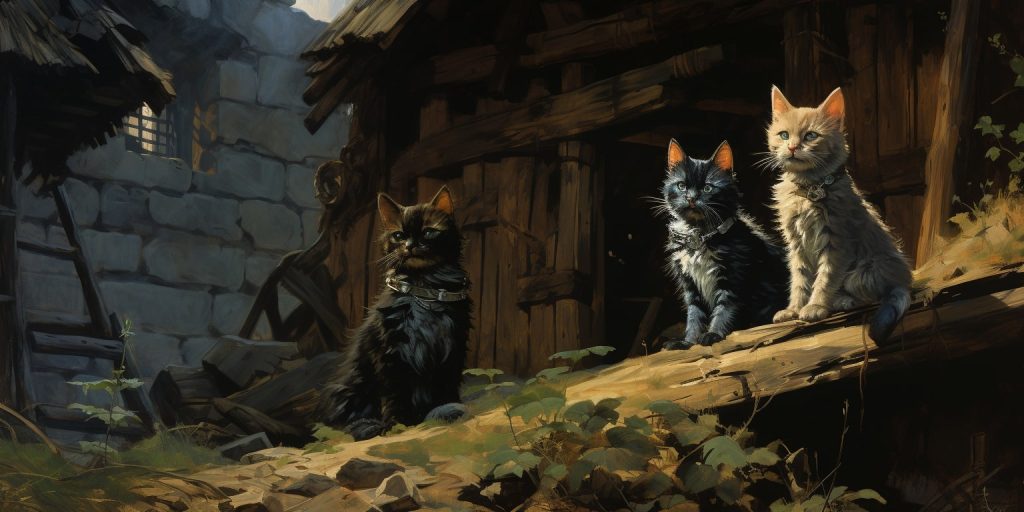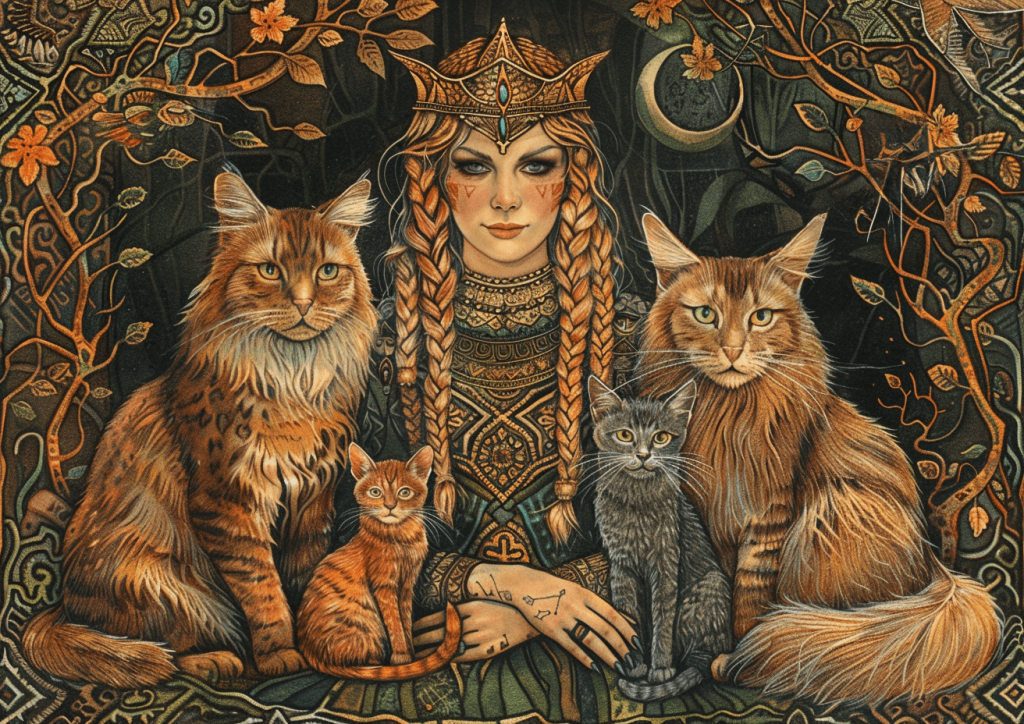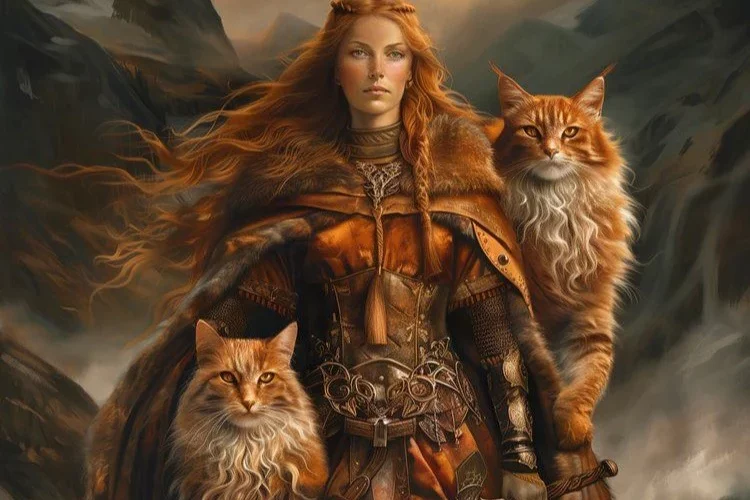In Norse mythology and Viking culture, cats played an intriguing dual role as practical allies and spiritual symbols. While they were essential for controlling pests in daily life, their deeper connection to the gods elevated their status to mythical proportions. Revered as symbols of fertility, protection, and independence, cats held a special place in Viking households and Norse legends alike. This article explores how cats became woven into Norse mythology and culture, representing both everyday survival and divine reverence.
Cats and Freyja: The Goddess of Love and Fertility
Cats are most prominently associated with Freyja, one of the most powerful goddesses in Norse mythology. Freyja, the goddess of love, fertility, and beauty, rode a chariot pulled by two large, majestic cats. According to legend, these cats were gifts from the thunder god Thor, symbolizing Freyja’s dominion over domestic life and her protective nature.
The connection between Freyja and cats highlights their importance in fertility and feminine power. Cats were seen as loyal guardians of homes, particularly of women and children. It was believed that Freyja’s feline companions would reward those who showed kindness to cats with blessings of prosperity and love. This belief may have encouraged Vikings to treat cats with respect and care, fostering their close relationship with humans.

Cats in Daily Viking Life
While cats held spiritual significance in mythology, they were also indispensable in the daily lives of the Norse people. Viking households and farms often relied on cats to control pests like mice and rats, which posed a constant threat to stored food supplies. Their agility and hunting prowess made them invaluable aboard Viking longships, where they helped protect grain stores during long voyages.
This practical role cemented cats as essential members of Viking society. Their presence was particularly critical during the harsh Scandinavian winters, where losing stored food to pests could mean the difference between survival and starvation. This dual role as both hunters and protectors further reinforced their significance in Norse culture.
Superstitions and Mystical Beliefs About Cats
In addition to their practical value, cats were surrounded by an air of mystery and superstition. In Viking culture, cats were often viewed as sacred creatures connected to the spiritual realm. It was believed that they could sense danger, illness, or even death, making them guardians of the home in more ways than one.
Killing a cat, even accidentally, was thought to bring misfortune or invoke the wrath of the gods. This deep respect for cats is reflected in several sagas and myths, where cats are portrayed as wise and mystical beings. Some stories even suggest that cats could act as messengers or intermediaries between humans and the divine, adding to their enigmatic reputation.

The Legacy of Cats in Norse Mythology
The legacy of cats in Norse mythology and Viking culture continues to captivate the imagination. Their association with Freyja, their role as protectors and hunters, and their connection to the spiritual world make them enduring symbols of independence, resilience, and mystery.
Even today, cats retain much of their mystical allure, reflecting the respect and reverence they earned in ancient times. From practical helpers in Viking households to divine companions of a goddess, cats remain an essential part of Norse mythology’s rich tapestry.
FAQs
1. What role did cats play in Norse mythology?
Cats were closely associated with Freyja, the goddess of love and fertility, and were seen as symbols of protection, independence, and prosperity.
2. Why were cats important in Viking households?
Cats were valued for their pest-controlling abilities, helping to protect food supplies both on farms and aboard Viking ships.
3. Were cats considered sacred in Norse culture?
Yes, cats were considered sacred and were believed to be connected to the spiritual realm. Harming a cat was thought to bring bad luck or divine retribution.
4. How did Freyja’s cats reflect her traits?
Freyja’s cats symbolized her nurturing, protective, and independent nature, as well as her role as a guardian of the home.
5. Are there any myths about cats in Viking sagas?
Yes, several Norse myths feature cats as mystical creatures, often acting as protectors, messengers, or symbols of divine power.
